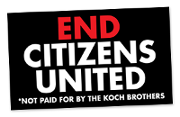Biblio
Filters: Term is Business [Clear All Filters]
(1996). Learn to Earn: A Beginner's Guide to the Basics of Investing and Business.
"Chewing gum and candy companies, such as Wrigley's, can thrive on recessions, because as Mr. Wrigley himself once said: 'The sadder they are, the more the people chew.'" (p. 84)
(1996). The Loyalty Effect : The Hidden Force Behind Growth, Profits, & Lasting Value.
"Loyalty is indeed a two-way street, and companies that dump people when earnings are down (much less when earnings are up) are sowing the seeds of their own failure. Every company falls on hard times now and then, and it's the loyal dedication of key employees that pulls most of them through. By showing people that the company won't stick by them in adversity, a firm can almost guarantee that the next time it's in trouble, its most talented employees will jump ship just when they're needed most." (p. 96)
(1996). Mental Disorder, Work Disability, and the Law.
"Many mental health advocates and experts note the parallel between useful accommodations for people with psychiatric disabilities, such as workplace flexibility and an individualized approach to management, and good management practices that would benefit any worker. They assert that adjustments of job demands to the temperament, sensitivities, strengths, weaknesses, and preferences of a valued employee occur frequently." (p. 268)
(1996). Organizational Behavior: Concepts, Controversies, Applications.
"In a recent poll, when workers were asked what they valued most in a job, 64 percent gave the highest rating to 'ability to work independently.' That even beat out 'high income' and 'chances for promotion.'"
(1996). A Place to Shine: Emerging from the Shadows at Work.
"After thirty years of practicing the art of leadership and listening to the students in my classes talk about their work, I have concluded that in order to shine in our work, we must be given the opportunity to love as well as to work. And both in the same place. We need to feel that we have the freedom to create, to develop our special gifts in ways that are unique to our calling. But we must also be given the opportunity to connect our gifts with others, to feel that our gifts, and thus our very selves, are confirmed by others who care about us."
(1996). Psychology Applied to Work: An Introduction to Industrial and Organizational Psychology.
"In the evolution of work design, employees are becoming increasingly more controlled by situational factors as opposed to exerting control over their work environments. As the research on mental health and stress revealed, the reductions in self-regulation (feeling 'out of control') impairs psychological well-being (Murphy, Hurrell, and Quick, 1992)." (p. 324)
(1996). The Rights of People with Mental Disabilities: The authoritative ACLU guide to the rights of people with mental illness and mental retardation.
"A reasonable accommodation is an alteration in the work environment that will enable the employee to perform the essential functions of the job. The accommodation must be practicable and reasonable in terms of cost to the employer and ease of accomplishment; in the words of the ADA, it cannot be an 'undue hardship' to the employer. The accommodation can be physical, such as a ramp up a few steps or and amplification device on the telephone. For people with mental disabilities, the core of reasonable accommodation is an adjustment to the work environment that will enable the person to perform at a productive level. These can include such changes as:
- Flexible scheduling
- Reassignment to a different job
- Changes in the physical location of work
- Alterations in supervision
- Unpaid leave for therapy
- Sensitizing coworkers
(1996). Surviving Your Boss: How to Cope With Office Politics and Get on With Your Job.
"In any situation of change, conflict, or misunderstanding there is anger. Anger frequently masks fear. Fear in situations of conflict and change is very predictable. And with anger there is usually blame, for oneself and for others. Anger is one of the most destructive forces in the workplace today. It is ultimately a fatal emotion. Studies show that about 20 percent of us have hostility levels high enough to be dangerous—to our own health and to those around us. Hostility level is associated with increased smoking, drinking, eating, and weight gain. Hostility has long been a well-established contributor to coronary risk and heart disease, as well as myriad other illnesses.
It's likely you have experienced the relationship between anger, depression, resentment, and low self-esteem. You know about the aches and pains that come from tension. The fatigue and lack of joy that ensue as days are increasingly filled with the burden of frustration and suppressed rage." (p. 96)
It's likely you have experienced the relationship between anger, depression, resentment, and low self-esteem. You know about the aches and pains that come from tension. The fatigue and lack of joy that ensue as days are increasingly filled with the burden of frustration and suppressed rage." (p. 96)
(1996). Unholy Hungers : Encountering the Psychic Vampire in Ourselves and Others.
"We, too, try to emulate the gods, but unlike the Greeks, we seem dangerously ignorant of the peril of hubris. Not that we blindly aspire to godhood from stupidity or arrogance; rather, we aspire to godhood because the modern demigods we revere are themselves mortal, so we quite reasonably feel their enviable fate might just as well be our own. What's more, celebrity in our culture is supposed to be available to all who have the guts to seek it, which implies that those who do not attain it are somehow deficient in the skills of self-reinvention"
(1996). Working with Problems of Narcissism in Entrepreneurial Organizations.
"Already weakened by environmental forces not facilitative of psychological development, and further constrained by widespread idealization of narcissistic relating as a kind of counterphobic social defense, workers and managers in entrepreneurial organizations, and entrepreneurs and their organizations themselves, seem almost dragged by inertia into object-delinked modes of work. How to generate creativity and productive developmental momentum out of such frightening chaos is the task."
(1996). Leader as coach: strategies for coaching and developing others.
"Unlike soft clay that can be pressed into infinite shapes, people evolve from a stable core. They can change in degree and bend in new directions, but they are unlikely to change in dramatic ways, at least not quickly. Respect their judgement about their own limits. Carefully evaluate how much change and what kind of change is fair to expect, especially if you are aware of changes or problems in other parts of their life or if they begin to appear distressed and confused." (p. 48)
(1997). The Alchemy of Fear, How to Break the Corporate Trance and Create Your Company's Successful Future.
"One would expect that, when a group of bright people come together to make a decision or analyze a problem, their combined abilities would result in a group intelligence greater than that of any individual. Instead, most groups experience exactly the opposite—inverse intelligence. The resulting group intelligence is significantly less than that of any individual of the individuals within it." (p. 80)
(1997). Arnold Economics.
Interview with Gordon Tullock:
"I am a very fortunate man to be paid a high salary to pursue my hobby." (p. 560)
"I am a very fortunate man to be paid a high salary to pursue my hobby." (p. 560)
(1997). Business Law.
(1997). The circle of innovation : you can't shrink your way to greatness.
"...wealth is not gained by perfecting the known, but by imperfectly seizing the unknown." (p. 30)
(1997). The Dilbert Future: Thriving on Stupidity in the 21st Century.
"The current method of motivating employees involves frightening them until their arteries harden, then trying to make it all better by giving them inexpensive gifts bearing the company logo." (p. 123)
(1997). How to Be Safe in an Unsafe World : A Guide to Inner Peace and Outer Security.
"If your intention is to creatively resolve everyday clashes that occur at home, on the street, or in the workplace, a willingness to understand the other side is essential. Remember, your goal in many situations is not to win arguments, not to prove your point; your goal is to be and feel safe." (p. 78)
(1997). Incestuous Workplace: Stress and Distress in the Organizational Family.
"'The last act of a dying organization is a thicker rule book.' The need for rules to control staff members marks a dramatic change in mutual respect, loyalty, and the esprit de corps that characterized earlier stages of organizational life." (p. 72)
(1997). Moths to the Flame: The Seductions of Computer Technology.
Often the computer's introduction leads to job loss, loss of job skills, and feelings of dehumanization. When a business uses computers, its employees become more interchangeable, more reliable, more controllable, and—usually—cheaper. The siren call of automation results in step-by-step changes in jobs to make them fit better into the maw of the beast. just as the industrial revolution turned artisans into factory hands, the information revolution is turning white-collar workers into machine tenders." (p. 118)
(1997). Organization Development and Change.
"It is important to emphasize that people who have low growth or social needs are not inferior to those placing a higher value on these factors. They are simply different. It is also necessary to recognize that people can change their needs through personal growth and experience. OD practitioners need to be sensitive to individual differences in work design and careful not to force their own values on others." (p. 357)
(1997). The Seven Fatal Management Sins: Understanding and Avoiding Managerial Malpractice.
"Every employee should be part of the corporate family. While that may be the case in some organizations, in other organizations employees are numbers—objects to be utilized and manipulated. Motorola stresses that the organization is a 'family' with human and democratic values, where no one can be fired without approval from the top." (p. 165)
(C)2014 CC-BY-NC 3.0, workcreatively.org











 ]
]